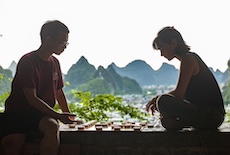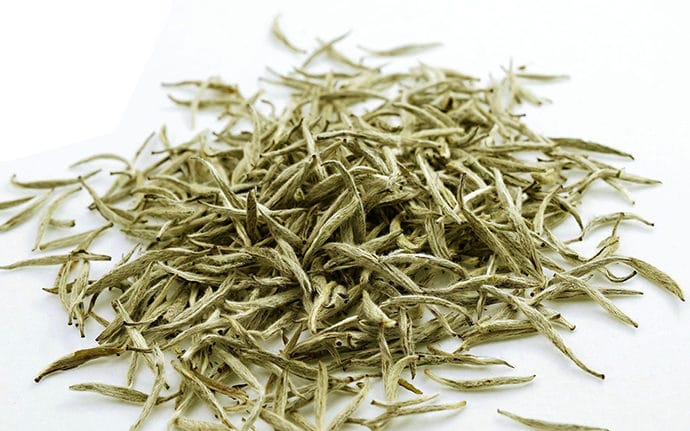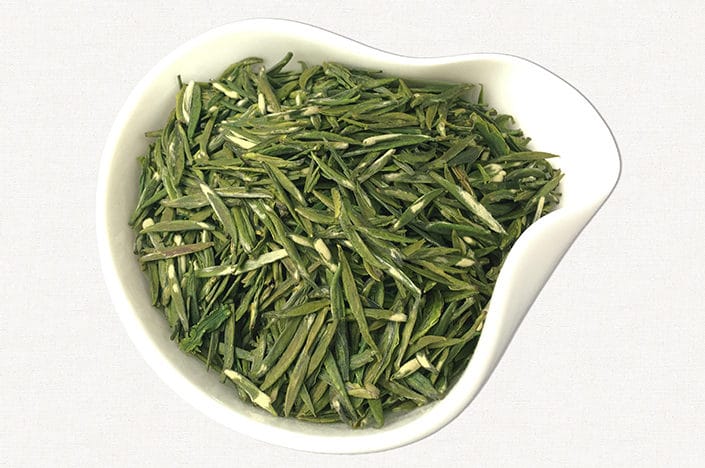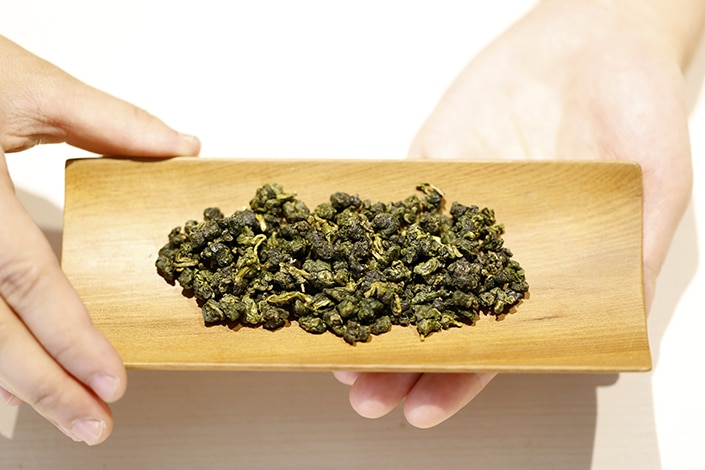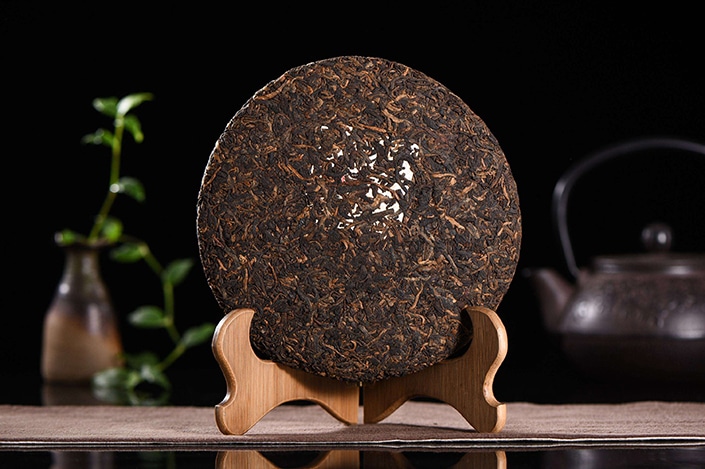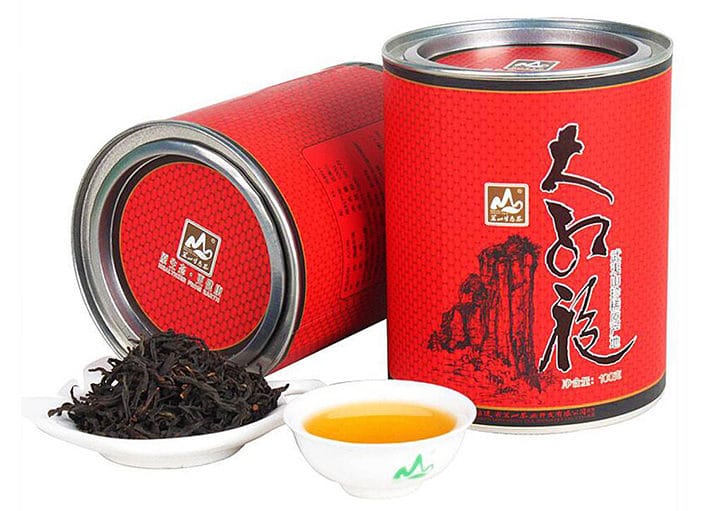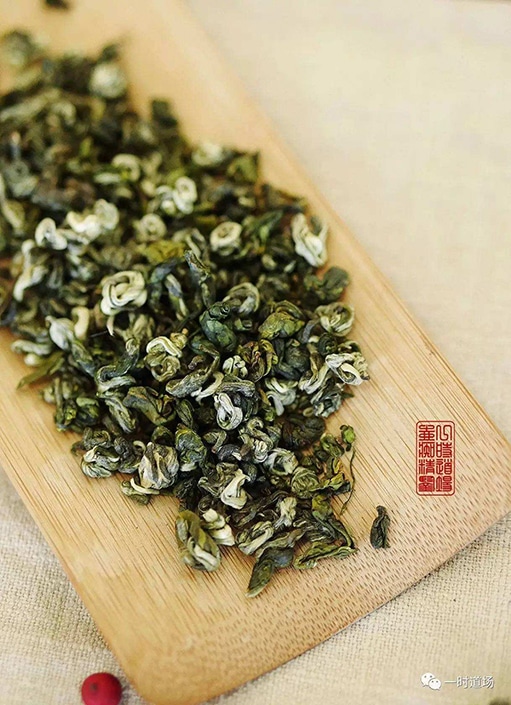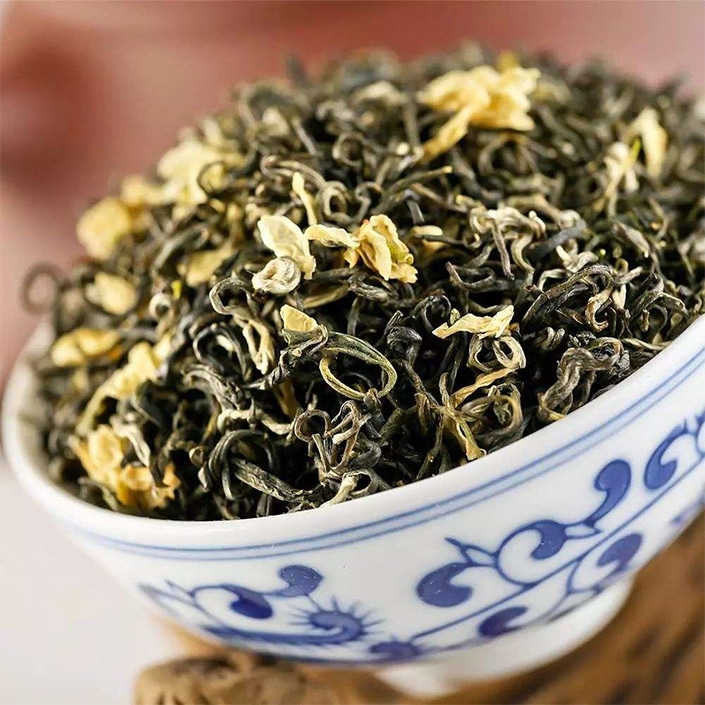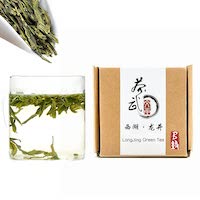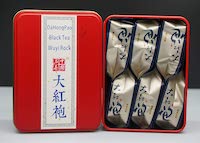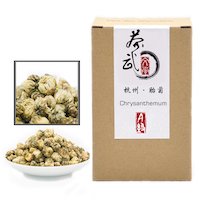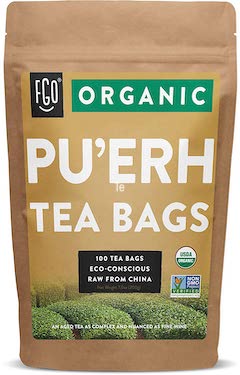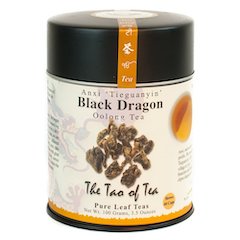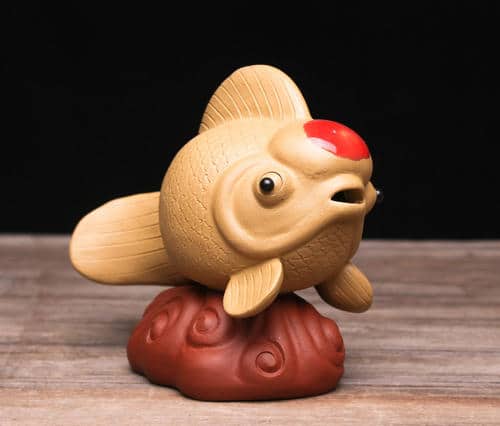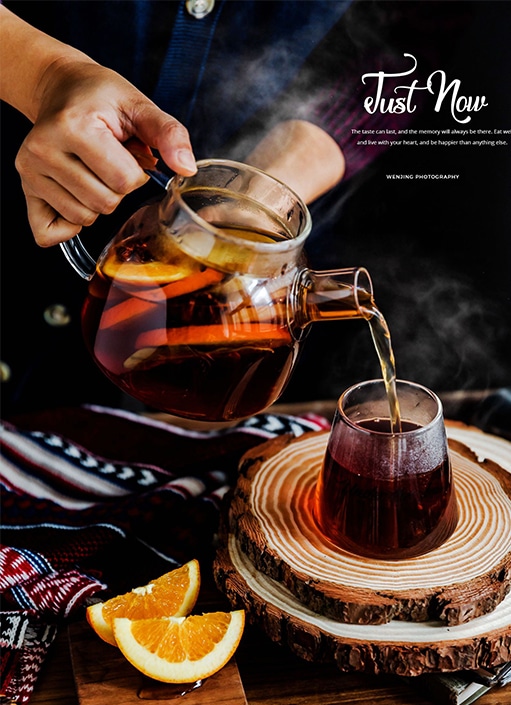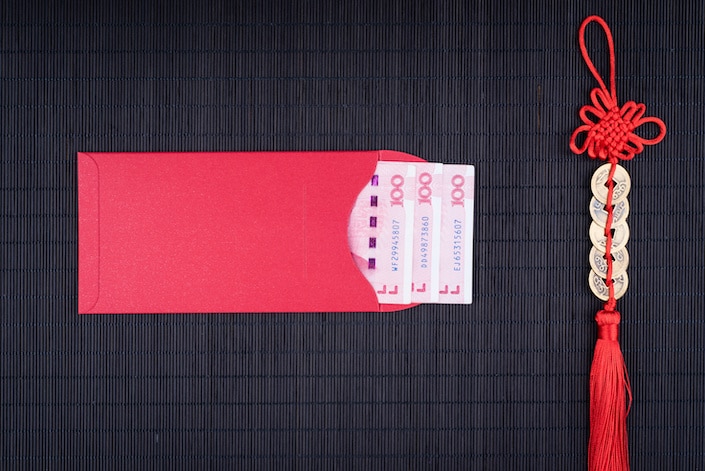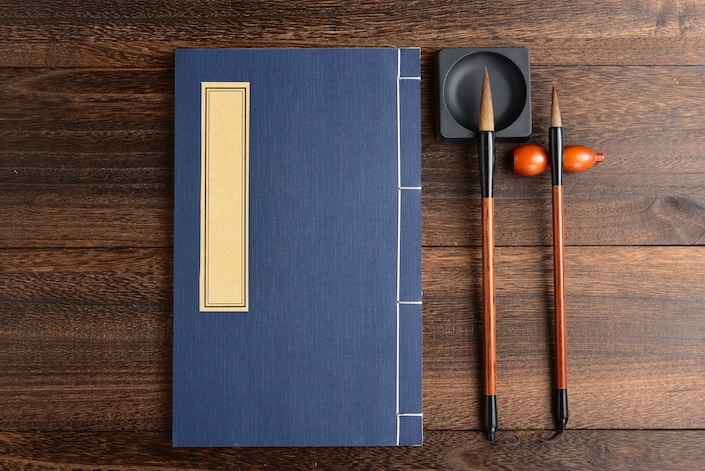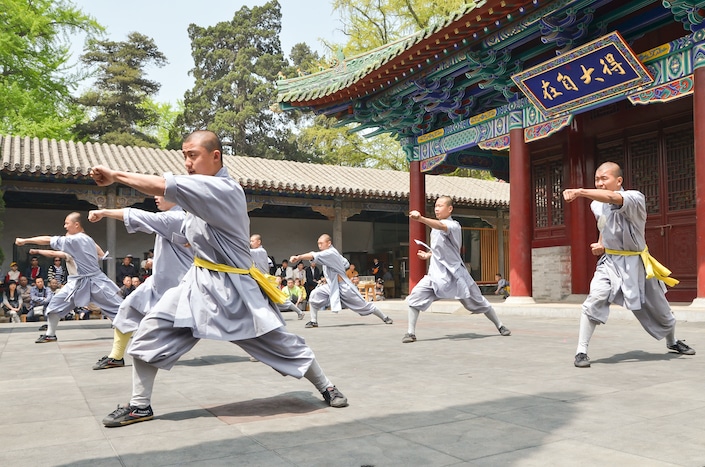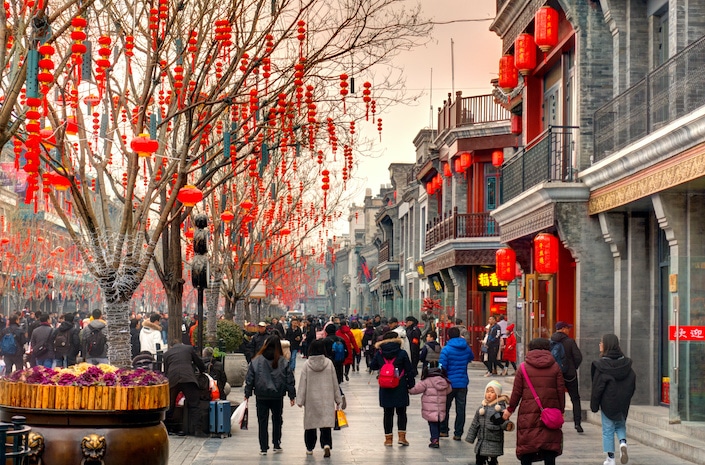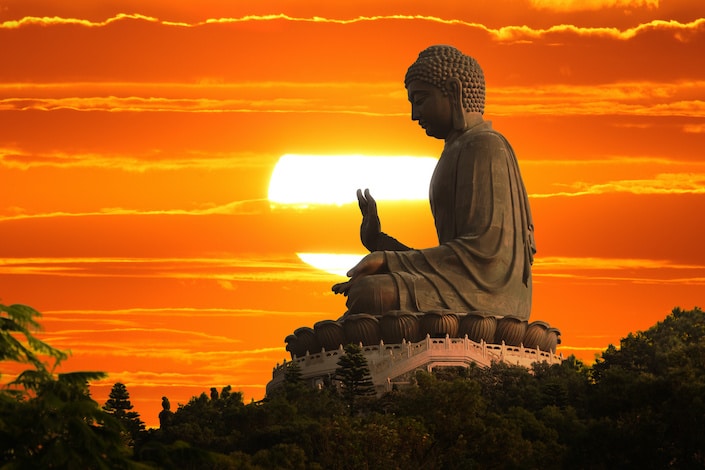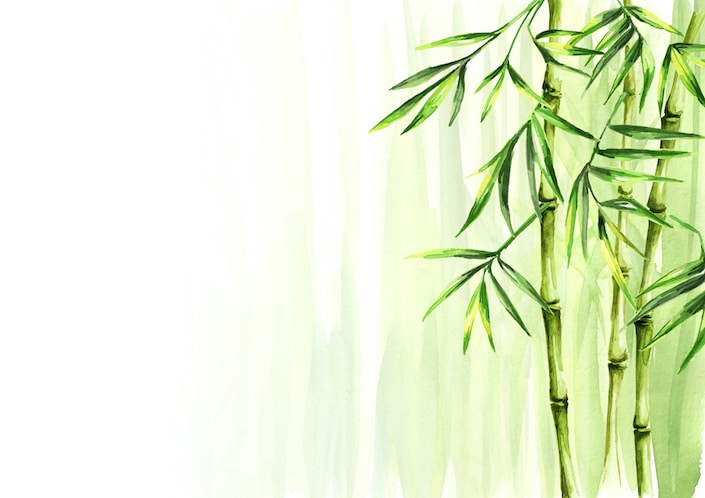Journey into the World of Chinese Tea
Learn Chinese in China or on Zoom and gain fluency in Chinese!
Join CLI and learn Chinese with your personal team of Mandarin teachers online or in person at the CLI Center in Guilin, China.
China is synonymous with tea, and tea with China. In fact, the history of tea in China is almost as long as the history of China itself. Despite the recent rise of coffee, Chinese tea culture continues to enjoy great popularity. Read on to learn about the past, present and future of tea in China.
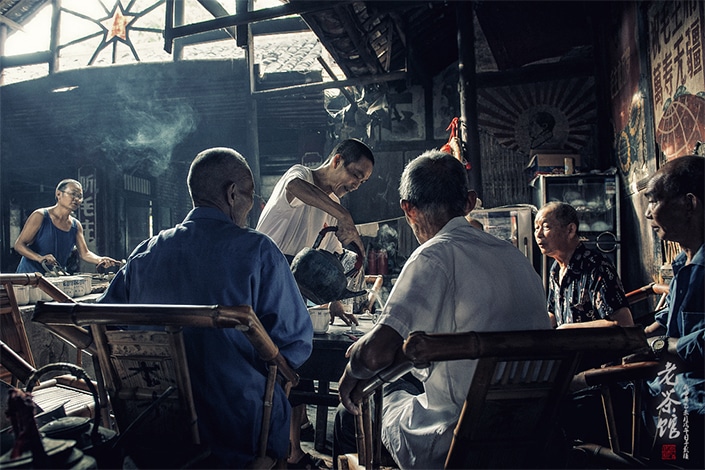
Table of Contents
The History of Tea in China
Shennong: The Mythical Father of Chinese Medicine
The history of Chinese tea (茶 chá) begins with Shennong (神农 Shénnóng), a mythical personage said to be the father of Chinese agriculture and Traditional Chinese Medicine.
Legend has it that Shennong accidentally discovered tea as he was boiling water to drink while sitting under a Camellia sinensis tree. Some leaves from the tree fell into the water, infusing it with a refreshing aroma. Shennong took a sip, found it enjoyable, and thus, tea was born.
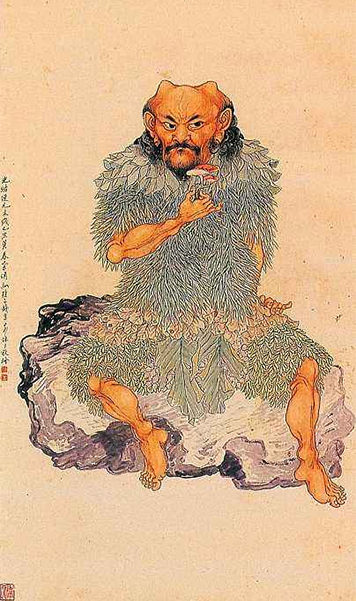
Shennong is considered the father of Chinese agriculture.
Early archeological and historical evidence
Chinese mythology aside, archeological evidence has been found indicating that tea was used as a medicine by the elite as early as the Han dynasty (206 BCE–220 CE).
Tea didn’t achieve widespread popularity as an everyday beverage in China until the Tang dynasty (618-907 CE), however. Chinese Buddhist monks were some of the first to develop the habit of drinking tea. Its caffeine content helped them concentrate during long hours of prayer and meditation.
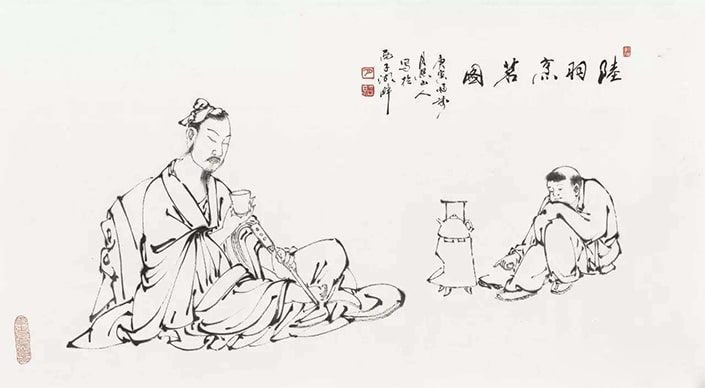
The Classic of Tea by Lu Yu
Much of the information we have about early Chinese tea culture comes from The Classic of Tea (茶经 Chájīng), written around 760 CE by Lu Yu (陆羽 Lù Yǔ), an orphan who grew up cultivating and drinking tea in a Buddhist monastery.
The Classic of Tea describes early Tang dynasty tea culture and explains how to grow and prepare tea.
In Lu Yu’s day, tea leaves were compressed into tea bricks, which were sometimes used as currency. When it was time to drink the tea, it was ground into a powder and mixed with water using a whisk to create a frothy beverage.
Although this type of powdered tea is no longer common in China, it was brought from China to Japan during the Tang dynasty and lives on today in Japanese matcha.
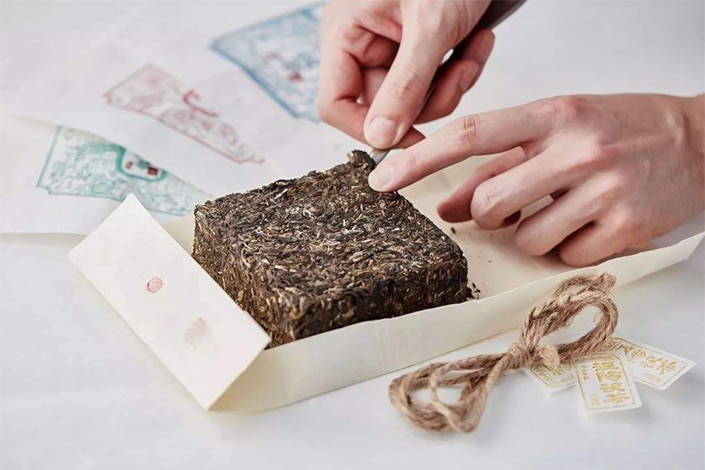
Tea bricks
Tea during the Ming and Qing Dynasties
During the Ming dynasty (1368–1644 CE), tea bricks were replaced with loose leaf tea by imperial decree. This change was meant to make life easier for farmers since the traditional method of creating tea bricks was quite labor intensive.
Loose leaf tea is still the most common form of tea found in China today.
Tea was introduced in Britain in the mid-1600’s and British demand for tea soon created a trade imbalance with China. To correct it, Britain began exporting opium to China.
After China tried to ban opium, Britain launched the mid-19th century Opium Wars to force the trade to continue.
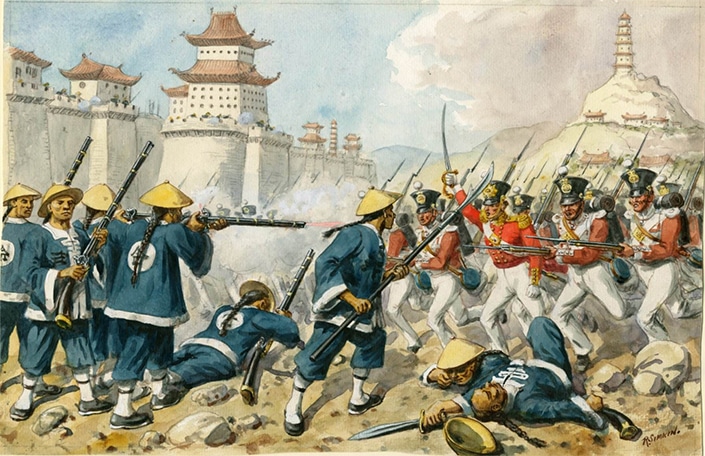
The East India Company and Robert Fortune
Although the wars achieved their stated goal, British merchants began to worry about the viability of continuing to rely on tea from the Chinese market. Soon, the East India Company sent Robert Fortune, a Scottish botanist and adventurer, to steal the secrets of tea-making from China.
Fortune’s stolen information, plants and seeds were then used to start large-scale tea production in India.
Indian tea production quickly outstripped that of China, and China lost its long-standing monopoly on the international tea trade.
The Chinese tea industry went into decline, and China has only recently regained its status as the world’s leading tea exporter.
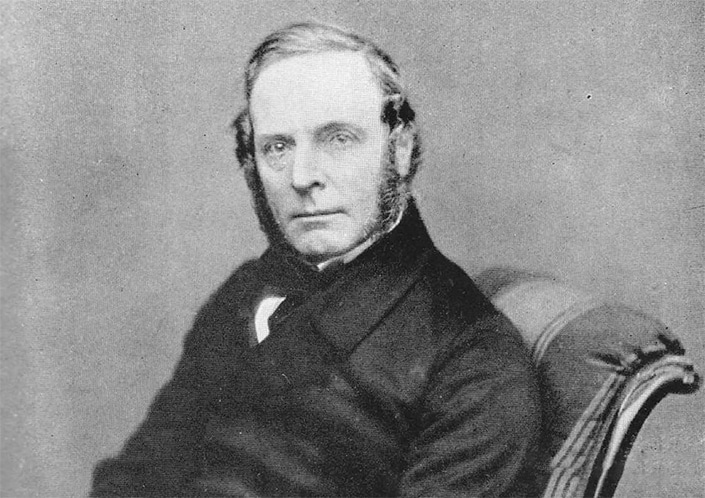
Robert Fortune
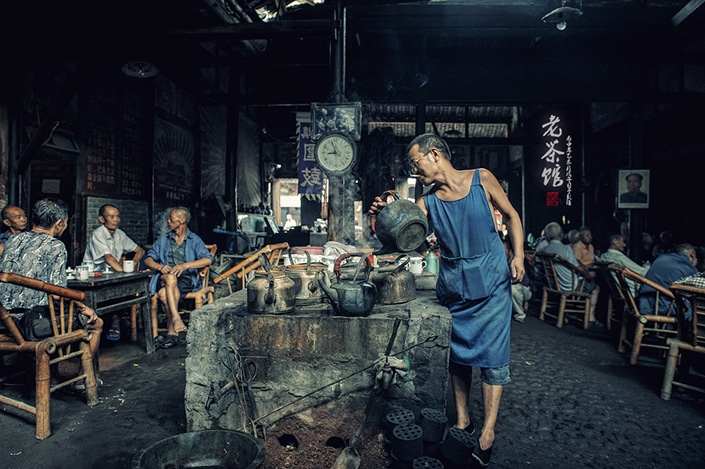
Popular Types of Tea in China
Today, most Chinese tea is loose leaf tea that’s steeped in boiling water, either in a teapot (茶壶 cháhú) or directly in a thermos or glass, depending on the type of tea being consumed.
Drinking tea made from tea bags is uncommon in China.
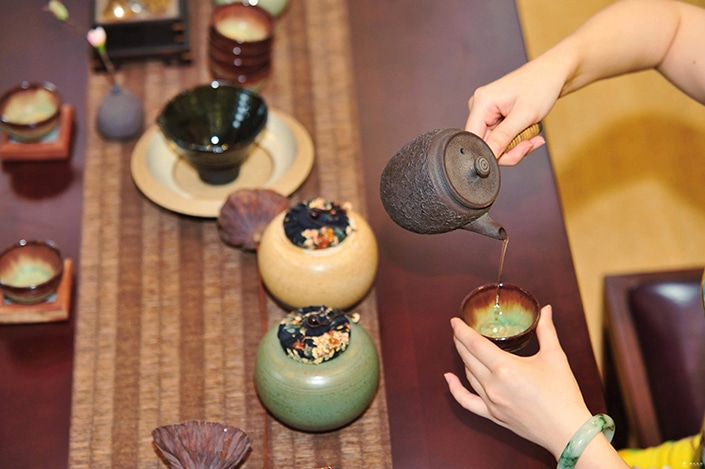
We really mean tea, Camellia sinensis tea!
“Tea” is used as a catch-all term for many different herbal brews in the West. In the strictest sense, however, the word “tea” only applies to beverages made from the leaves of the Camellia sinensis plant.
Contrary to popular belief, the differences in taste and color seen in different types of Chinese tea are not due to the use of different kinds of tea leaves. Rather, they are due to differences in the production and manufacturing process.
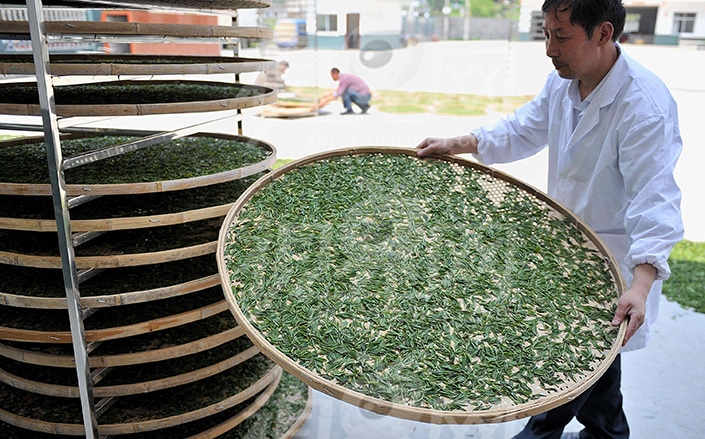
Types of Chinese teas
The type of tea produced is determined by the level of oxidation the tea leaves are allowed to undergo before the process is stopped by heating the leaves. In China, tea merchants usually refer to this oxidation process as fermentation (发酵 fājiào).
Chinese teas are classified according to their level of fermentation. The more fermented the tea, the stronger its taste. White teas (白茶 báichá) are essentially unfermented (不发酵 bù fājiào).
They are followed by lightly fermented (微发酵 wēi fājiào) green teas (绿茶 lǜchá), half fermented (半发酵 bàn fājiào) oolong teas (乌龙茶 wūlóng chá), and fully fermented (全发酵 quán fājiào) black teas (红茶 hóngchá).
Pu’er (also called pu-erh) teas (普洱茶 pǔ'ěrchá), which are generally quite dark and strong, are said to be post-fermented (后发酵 hòu fājiào).
Honorable mentions
Certain regions of China are known for producing and consuming special types of tea. For example, Wuyi Mountain, in Fujian Province, is particularly famous for production and consumption of fine oolong teas such as dahongpao (大红袍 dàhóngpáo).
Green teas such as biluochun (碧螺春 bìluóchūn), grown in Jiangsu Province, are popular in the region around Shanghai.
We must not forget herbal "teas"
Other beverages referred to as “tea” also exist in China, although some of them don’t actually contain any Camellia sinensis leaves.
One popular tea is jasmine tea (茉莉花茶 mòlìhuāchá), made from a mixture of green tea and jasmine flowers.
Barley tea (大麦茶 dàmàichá), made from roasted barley grains, doesn’t actually contain any tea leaves at all.
Last but not least, nǎichá!
Other types of “tea” that enjoy immense popularity among the younger generations are milk tea (奶茶 nǎichá) and bubble tea (珍珠奶茶 zhēnzhū nǎichá).
These sugary drinks, which don’t contain much (if any) actual tea, come in a variety of different flavors.
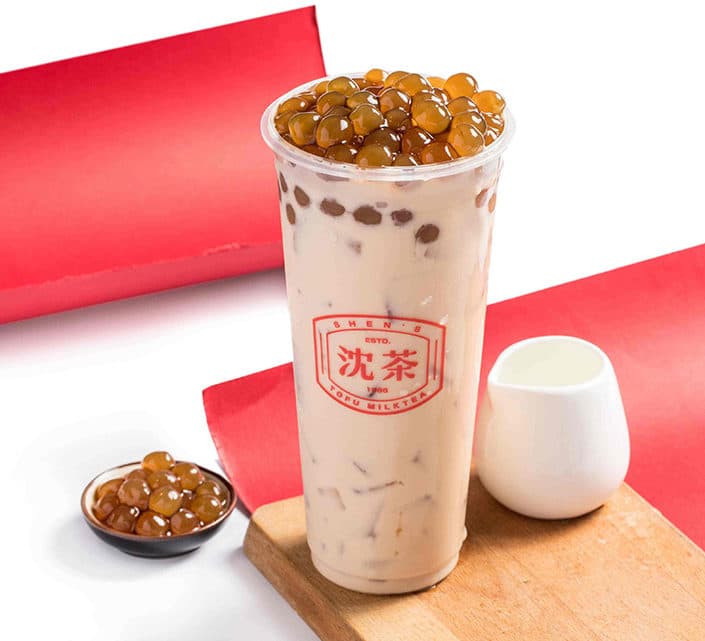
Bubble tea
Top 5 Recommended Chinese Teas
CLI is in the business of China, and in China business means drinking tea. After over 12 years working day in and day out on behalf of our students and community (which means staying well caffeinated!), we've come know tea well.
Here are our top 5 recommended Chinese teas:
Modern Chinese Tea Culture
Tea culture in China is most intact in the south, where the bulk of China’s tea is produced.
Tea can be consumed at home or in teahouses (茶馆 cháguǎn), many of which offer private rooms for drinking tea with friends or business partners. Although tea is consumed by people from every sector of society, most tea connoisseurs tend to be middle-aged business people, intellectuals or artists.
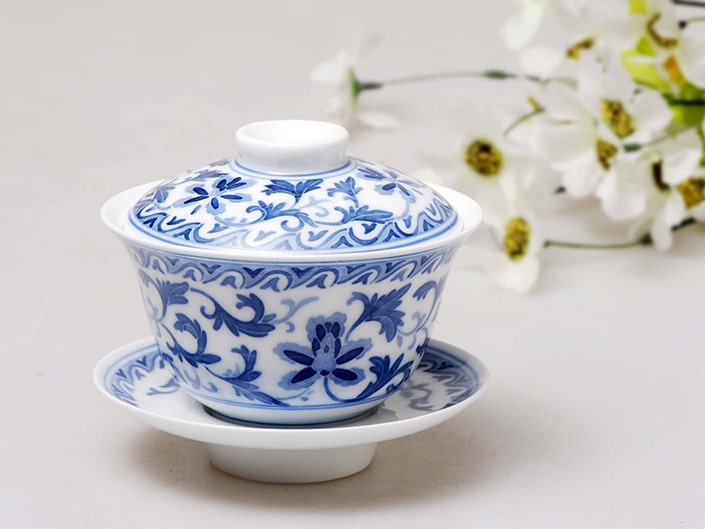

Gaiwan
Chinese tea ceremonies gain in popularity
Much of modern Chinese tea culture revolves around the gongfu tea ceremony (功夫茶 or gōngfūchá). Thought to have originated in Fujian or Guangdong Province, it usually features black, oolong or pu’er tea.
At its most basic, the ceremony makes use of tiny tea cups (茶杯 chábēi), a tea-brewing vessel such as a gaiwan (盖碗 gàiwǎn) or an Yixing purple clay teapot (紫砂壶 zǐshāhú), a tea strainer, a tea pitcher and a tea table or tray. Other utensils such as tea tongs are optional.
The more complicated the ceremony, the more utensils are likely to be involved. Tea tables are often quite large and can be decorated with whimsical tea pets (茶宠 cháchǒng).
How to conduct a Chinese tea ceremony
Normally, tea ceremonies are run by a host who begins by steeping loose leaf tea in water in a gaiwan or teapot, and then pouring it through a tea strainer into a tea pitcher to filter out bits of tea leaf.
Next, the host pours tea from the pitcher onto teacups. Instead of serving this first batch of tea to guests, the host generally pours it out onto the tea table, allowing it to drain into a bucket underneath.
This is done to wash the tea cups and also because tea from the first pour is thought to be too strong to drink. This process is then repeated, except that the tea is served to those present instead of being discarded.
After being served, guests should either thank the host verbally or express thanks by tapping their bent index and middle fingers on the tea table. This custom is most common in southern China and is said to have originated during the Qing dynasty (1636–1912 CE), when the Qianlong Emperor, who was traveling in disguise, poured tea for a servant.
The servant wanted to show his gratitude by kneeling, but couldn’t do so for fear of revealing the emperor’s identity. Therefore, he tapped the table with two bent fingers instead.
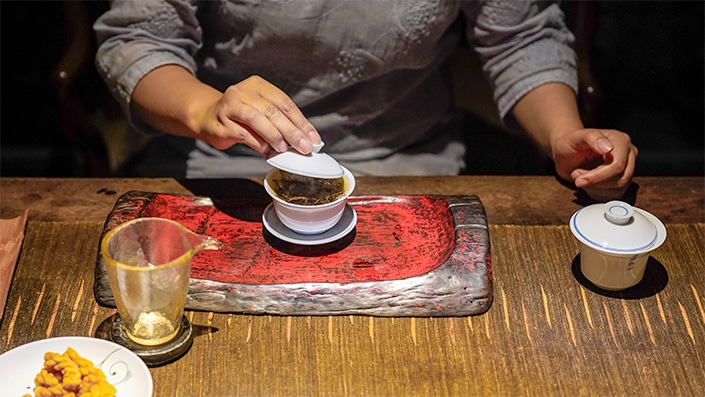

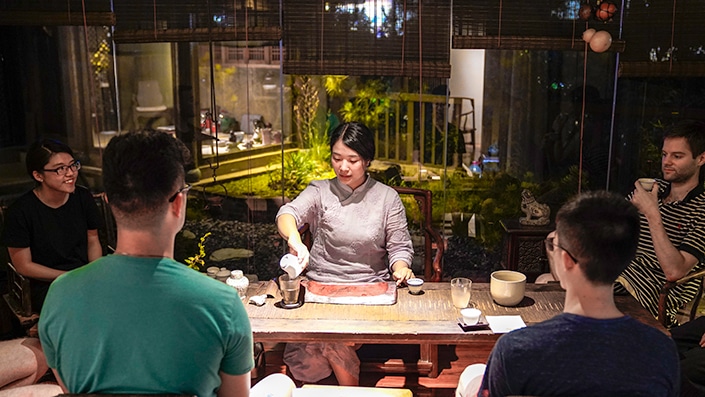

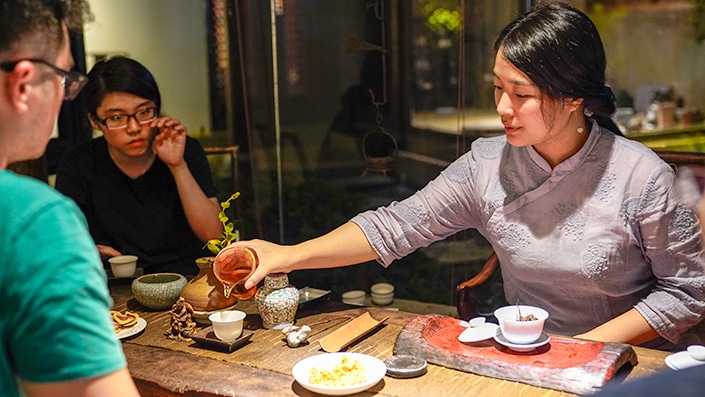

For a full transcript of the above video that includes Chinese characters, pinyin, and English translations, click here.
Everything tea
It is possible to spend a great deal of money collecting expensive tea leaves and fine tea accessories, especially Yixing teapots.
In some affluent circles, engagement with tea culture is used as a way to “flaunt wealth and invest savings,” a bit like wine culture in the United States. Certain wealthy individuals use their knowledge of tea culture to impress friends and gain prestige.
It’s also not uncommon for expensive teas to be given as gifts on important occasions.
That said, not everyone you encounter in China is going to be a tea connoisseur. Many won’t even be familiar with the gongfu tea ceremony.
Some families don’t have the habit of drinking tea, and some people simply drink it without fanfare in a thermos that they carry with them throughout the day.
The Rise of Coffee
China has been a nation of tea drinkers for a long time, and coffee (咖啡 kā fēi) was rare in China until recently. Over the past 20 years, coffee’s popularity has steadily increased, especially among urban millennials.
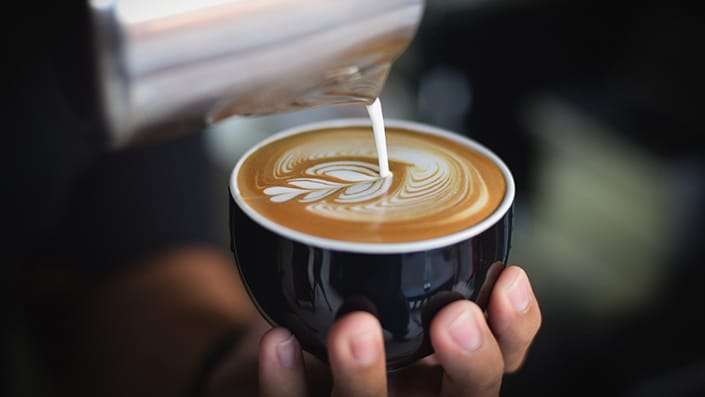

How much coffee do people drink in China?
Although per capita Chinese coffee consumption is still only 5 cups per year compared to 400 cups in the United States, the demand for coffee in China has grown exponentially since the first Starbucks opened in Beijing in 1999.
Coffee shops (咖啡馆 kāfēiguǎn) are now ubiquitous in China’s first, second, and even third-tier cities.
Coffee is especially popular with students and young white-collar workers, who associate it with the aspirational Western lifestyle that comes with newfound economic mobility.
The prices at Starbucks in China are quite high compared to those in the U.S., but this only helps to add to its allure and cements Starbucks coffee as a status symbol for the new middle class.
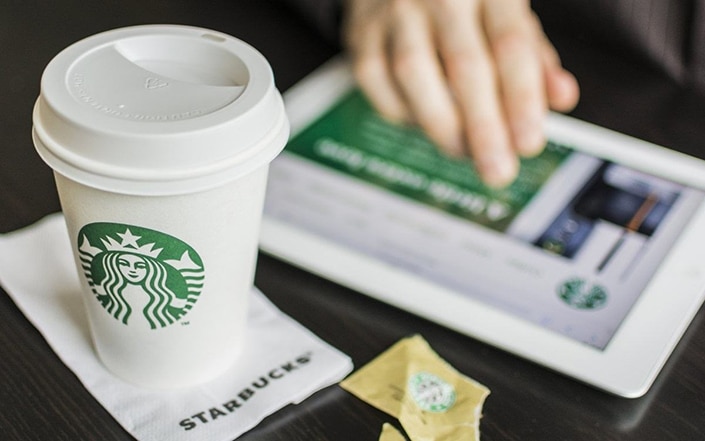

The Future of Tea
For now, tea drinking is firmly entrenched in Chinese culture. Coffee’s increasing popularity poses a challenge to the Chinese tea industry, however.
Today, traditional teahouses are nowhere near as popular with members of the younger generation as coffee shops are. This is perhaps related to the fact that traditional Chinese tea suffers from a branding problem.
While large coffee chains like Starbucks have sophisticated brand images that attract young consumers, no traditional Chinese tea brands with such widespread appeal have emerged.
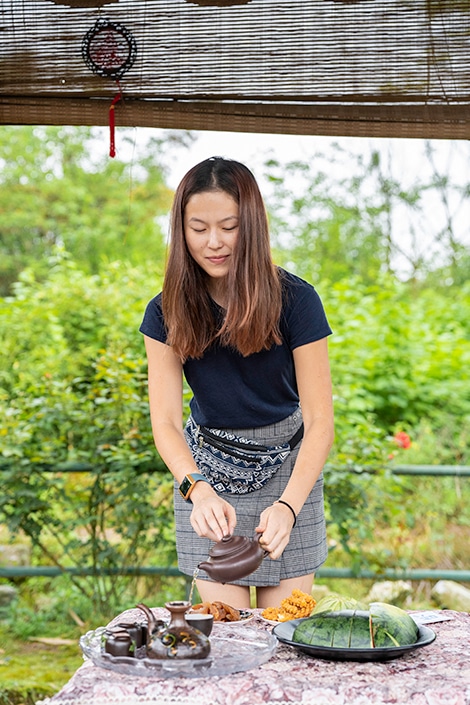

The Chinese tea industry marches on
Recently, some traditional tea companies have responded to changes in the market by opening trendy cafes or offering new products designed to appeal to more modern tastes such as fruit-flavored teas, tea bags, and instant tea. Such changes may be necessary if China’s tea industry wants to compete with coffee in the long-run.
Considering its strong historical record of successfully adapting to the changes brought about by wars, intellectual property theft and imperial decrees, the Chinese tea industry seems likely to overcome its current challenges and continue to exist for many years to come.
| Hànzì | Pīnyīn | Definition |
|---|---|---|
| 茶 | chá | tea |
| 喝茶 | hē chá | drink tea |
| 神农 | Shénnóng | "The Divine Farmer," a mythical ruler and deity credited with inventing agriculture |
| 茶经 | Chájīng | The Classic of Tea by Lu Yu, the first ever monograph on tea |
| 发酵 | fājiào | ferment (used to refer to oxidation process in tea production) |
| 白茶 | báichá | white tea |
| 绿茶 | lǜchá | green tea |
| 普洱茶 | pǔ'ěrchá | pu'er or pu-erh tea |
| 茉莉花茶 | mòlìhuāchá | jasmine tea |
| 大麦茶 | dàmàichá | barley tea |
| 奶茶 | nǎichá | milk tea |
| 珍珠奶茶 | zhēnzhū nǎichá | bubble tea |
| 茶馆 | cháguǎn | tea house |
| 功夫茶 | gōngfūchá | gongfu tea ceremony |
| 盖碗 | gàiwǎn | lidded, handle-less bowl used to brew tea |
| 紫砂壶 | zǐshāhú | purple clay teapot |
| 茶壶 | cháhú | teapot |
| 茶宠 | cháchǒng | tea pet |
| 咖啡 | kāfēi | coffee |
| 咖啡馆 | kāfēiguǎn | coffee house |



